A CFI Drops Some Great Advice on a Low-Time Student Pilot- For Solo Landings, and Life
[This is the 11th in a series of articles detailing my journey to earning a private pilot certificate. Click to read: Part 1, Part 2, Part 3, Part 4, Part 5, Part 6, Part 7, Part 8, Part 9, Part 10.]
On St. Patrick’s Day, I woke up and immediately threw on some Celtic rock (Flogging Molly, Dropkick Murphys, Sons and Daughters, etc.) and did my student pilot studying bobbing my head in time with the bar-fight-smash-a-pint up-tempo fiddle and drums. I wrote down the field elevation, pattern altitude, runway info, CTAF and AWOS for Nervino Airport in preparation for my flight lesson.
I got to the airport pretty early, but so did my instructor, Dave. It’s nice to get up in the air as early as possible to avoid the afternoon winds we get at Truckee-Tahoe Airport. After we pulled the glass cockpit Skyhawk, 68F, out of the hangar and hopped inside, Dave told me that we were going to take advantage of the super calm winds and practice landings instead of fly to Nervino like we’d planned. No problemo! I can use all the practice I can get. He said, “I’m feeling good about today. I think today we’re going to have some ground-breaking landings.” I just smiled, thinking to myself, As long as we don’t break the plane!
Baby Steps to Solo Landings
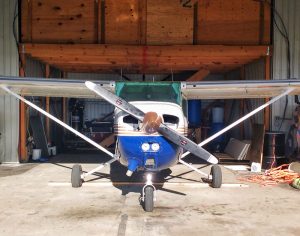
I did all the radio calls, and we taxied down to the run-up, and went through that checklist pretty fast. A Pilatus jet was taxiing down behind us, so we didn’t want to hog the runway. I lined us up on the centerline, put in full throttle, and peeled us up and away when we hit 55kts. Dave had me turn a little early onto the left crosswind so we could make some space for the Pilatus, and I found myself kind of struggling to hold altitude. I was so jazzed to be there and flying (it was absolutely stunning outside that day) that I wasn’t paying as much attention as I should’ve been.
I quickly ran through GUMPS (I always say Gear instead of Gas…), confirmed the fixed landing gear hadn’t gone anywhere, Mixture was appropriate for our altitude, our Prop is fixed pitch (so we pull on carb heat around this time instead), and made sure Dave wasn’t planning on jumping out of the airplane (Seatbelts and Security).
A few seconds later, we were abeam the numbers and I pulled out the carb heat, pulled the throttle back to 1500 RPMs, and put in the first notch of flaps once we were slower than 85kts. We had a bit of a tailwind, so that didn’t happen until just before the turn to base. The radio calls were feeling good today. I found the trick (for me at least) is to adopt an imaginary pilot persona and pretend like I know what I’m doing. It seems to be working so far, with much more confidence and much less stuttering.
We turned final, and I didn’t notice then, but I was going really slow. I was holding centerline like a boss, but the landing itself was kind of jarring. Dave told me as we cleaned up and powered up for a go-around that I started the transition to flare way too early, which didn’t help my already slow airspeed.
A Flight Instructor in Everyone: Solving the CFI Shortage
Yes, flight instructors have many interesting stories to tell. Lately, however, there just don’t seem to be as many CFIs around to tell them. In the last few years, aviation has experienced a significant migration of talent from the flight instructor community to the airline community. In fact, commuter airlines are now hiring pilots whose entire career fits easily in a single logbook! [Click to read more…]
I flew us once more around the pattern, and we were joined by a Wolfpack helicopter coming in over Boca Hill (north-ish) and a Piper Archer departing runway 29 as we were about midfield downwind. I could hardly hear the other pilots, but I could hear Dave just fine. I cranked the volume on my headset, and it helped a little, but not much. Even the weather was almost unintelligible over the roar of the engine and wind. I think the headset and radio were both working properly, but the headset doesn’t fit tight enough over my ears to block out the cockpit noise. That’s going to be another thing I need to buy before soloing- if I can’t hear another pilot who’s not sure what they’re doing, or a jet announcing they’re flying straight in for a runway I’m about to turn base for, my aviation adventure will end before it even begins.
As I listened to Dave confirming the location of the other aircraft over the radio, I realized that this is something I really need to learn to do. But first, I need to focus on locking down these landings.
Judging Your Distance and Height on Final for Landings
I turned final and realized I was way too high. Unfocused, I tried to nose down before realizing I should pull back the power. As I went to click on the third notch of flaps, I heard Dave say, “Why do you want to rip off our flaps?” In the moment, all I recognized was him saying flaps, so I went to put in all the flaps before he repeated himself and I realized we were descending at just about 85kts. I pulled up and pulled back the power, and put in the all the flaps as we were flying over the numbers. We were probably 40-50’ up still, but when I expressed concern, Dave reassured me we have more than enough runway for a touch-and-go. Eventually, I got the Skyhawk down over the runway, and we landed flat and bounced a little. “Eek,” I yelped as we jostled around before finding the centerline and getting ready to head back up.
Dave took the controls and said he was going to demonstrate for me this lap around the pattern. As we turned final, he reminded me that we need to be keeping around 65kts all the way to the ground. I put my left hand lightly on the yoke so I could feel it move, and focused intently on my peripherals. I wanted to burn into my mind the sight picture when I’m at the right height to transition to flare.
After a super smooth, awesome landing, Dave got us off the ground and handed me back the controls. “This time, focus on keeping us at 65 until we get down to the runway and then don’t. let. it. land,” Dave said, putting a staccato-like emphasis on the last part.
“You got it!” I said as I veered right over the bypass for noise abatement.
Inching Closer to Nailing Those Landings
I made the radio calls and started the pre-landing checklist and carb heat-1500 RPM process earlier than usual so that I could focus on the flaps. I flipped the first notch on when I was abeam the numbers, made the radio call right before I turned base, and made sure I wasn’t coming in too high. Knowing Dave wouldn’t let us crash, I allowed myself to keep a nose-down pitch longer than I really felt comfortable with, which kept our airspeed up.
The only thing Dave had to tell me on this landing was reminding me to pull the power back to idle as I transitioned to a nose-high pitch attitude. It wasn’t a very smooth landing, but it felt a little better than the first one, at least.
As we climbed back out and into the pattern, Dave told me I seemed unfocused. I nodded, but after racking my brain I couldn’t figure out why I would be. I don’t really have any social life stresses, I’ve given up completely on the financial front (thank you, aviation), and I got the tire on my car fixed. So, not knowing what to say, I did what I always do and blurt out everything in my head hoping a little nugget of truth will slip out and surprise me. Luckily, it did!
Handling In-Flight Emergencies: Are You Really Prepared?
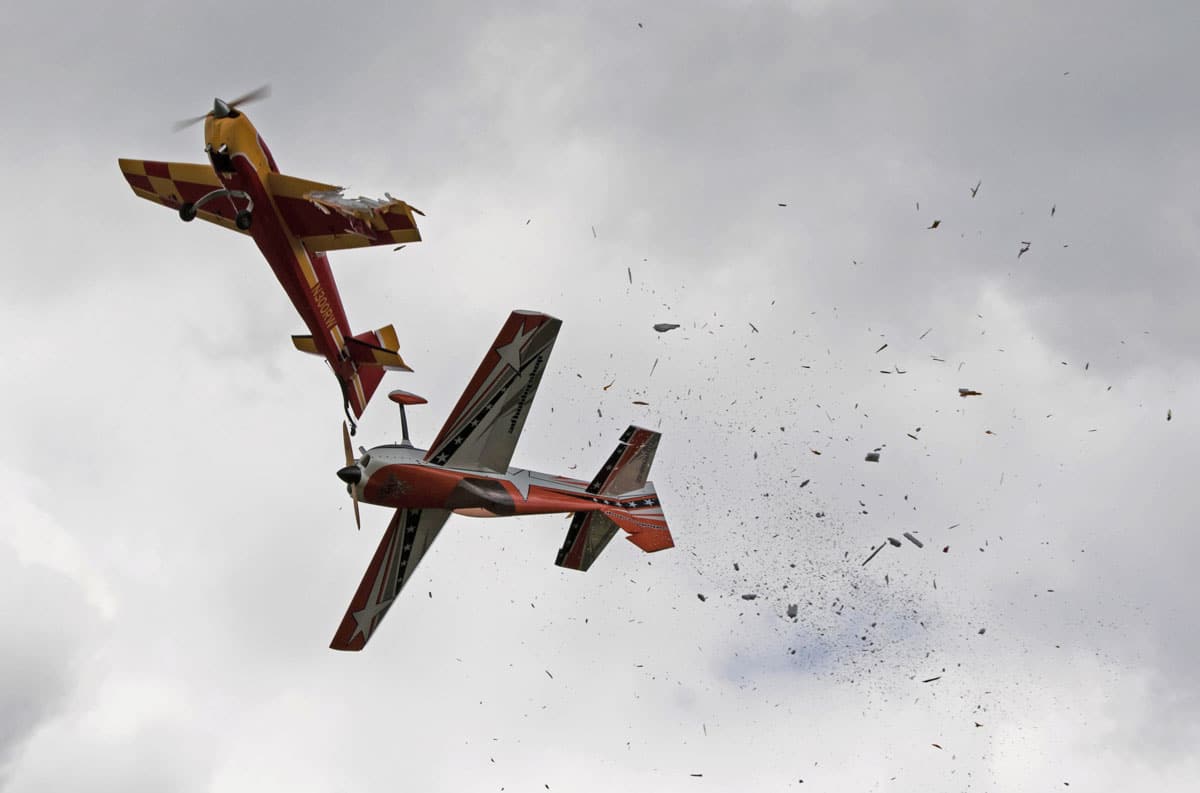 Recently, I got the opportunity to review Rod Machado’s new eLearning Course about in-flight emergencies. The course is about six hours of short videos divided into six chapters, with a little quiz at the end. The videos contain real in-flight footage, audio recordings of real in-flight emergencies, little animated people, and of course, some classic Rod Machado jokes. I figured this course came about at just the perfect time in my flight training, as I’m about at my first solo flight and handling in-flight emergencies [Click to read more…]
Recently, I got the opportunity to review Rod Machado’s new eLearning Course about in-flight emergencies. The course is about six hours of short videos divided into six chapters, with a little quiz at the end. The videos contain real in-flight footage, audio recordings of real in-flight emergencies, little animated people, and of course, some classic Rod Machado jokes. I figured this course came about at just the perfect time in my flight training, as I’m about at my first solo flight and handling in-flight emergencies [Click to read more…]
Dave: Part-time CFI, Part-time Life Coach
“I don’t know why I would be, I mean- I’m really excited to be here and flying, but I felt like I was doing better yesterday, I guess, and I know I can do better but I can’t!”
Dave kind of laughed and used his hand to draw a straight, upsloping line in the air. “This is how everyone thinks their progress is going to be.”
He then used his hand to illustrate a series of waves that rose and fell in a generally upsloping direction. “This is how progress actually goes. There will be days where you do something perfectly, and you’ll make the mistake of thinking you’ll do it perfectly forever, and you won’t.”
I nodded again, knowing that he was exactly right.
He continued, “Here’s a little life advice: if you focus on doing, instead of how you think you should be doing, you’ll do a lot better.”
BAM. Dave, always dropping wisdom on me. “Alright, you’re right,” I said, pausing to make the turning left crosswind radio call. “Let’s do this.”
As we flew over Old Town Truckee, watching the little cars buzzing around the crowded streets, Dave said, “And another thing- I’m much happier with you making the same mistakes as opposed to having one perfect landing and then one so bad I have to take control of the plane. It’s better to be consistently mediocre than unpredictable.”
I busted up laughing. I never thought I’d be happy to be called consistently mediocre.
He continued, unabated. “Consistently mediocre means that you’ll become consistently good. Unpredictable means that each success is a fluke and you’re not really learning.”
I made a ‘well, that’s a good point’ face, and then ran through the pre-landing checklist, and started pulling carb heat and power back. This time, when I turned final, I was at the altitude sweet-spot, which I’m starting to think is around 200-250 AGL. The flaps and radio taken care of, I focused on allowing myself to ease into ground effect and not being afraid of smashing into the ground. Dave was totally silent until we touched down, then he reminded me to steer with my feet as the centerline had escaped me. Duh!
Completely Solo Landings!
“On this next one,” Dave said. “Keep the yoke moving more. You can double the amount you’ve been moving it and that would be great.”
“I can do that,” I said with a smile, and we hopped back up into the sky.
The next landing was a little less smooth than the one prior, but again, Dave didn’t say anything! I was truly getting the hang of it. On the next go around, Dave said, “Soon I’m going to start singing, I’ll be so bored!” and “I could die right now and you’d be able to land the plane,” to which I quickly responded, “Yeah- don’t die though!” And laughed all the same.
This was our last lap of the day, and the wind had started to pick up a little bit. I got distracted, and when I turned to final I realized I was way too high. I nosed down, pulled the power back, adjusted the trim, and added all the flaps, but we were still super high.
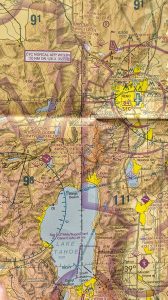
I brought us down into ground effect, and I was tracking the centerline. We sunk just a little, and I pulled up a little too much, added a little power, pitched for level flight, and pulled back the power once we stopped ballooning. Then as we got lower, I pulled back, but not hard enough. The last of my solo landings was still not smooth, and I dropped us harder on the right side than the left. I steered with my feet and brought us to a fairly nice, gradual stop before following the yellow line back onto the taxiway. After crossing the hold short line, I gave my last radio call of the day and parked us on a T outside Sierra Aero.
Out of the Sky, into the Books
I grabbed all my stuff and followed Dave over to my car, where he filled out my logbook and we scheduled next week’s lessons. Unfortunately, it looked like another storm was heading our way, so we might be doing ground school. I took a practice written test last night and the only questions I missed were cross-country related chart ones (I got a 77), so we’ll be working on that.
It’s easy to get motivated to study when I feel like I’m making progress in the sky, so I’ll be hitting the books hard! I wish you all good luck and great weather.
Crosswind Landing: Using the Crab and Sideslip Techniques

“Never fly with strangers, unless you fly stranger than they do.”
Now that’s a rule I seldom bother to use. After all, strangers can teach you some interesting things, and some strange things, too. I experienced one of these unusual events many years ago when hitching a ride to a speaking engagement after my plane developed mechanical trouble. A nice enough fellow in a Piper Comanche, accompanied by two friends [Click to read more…]







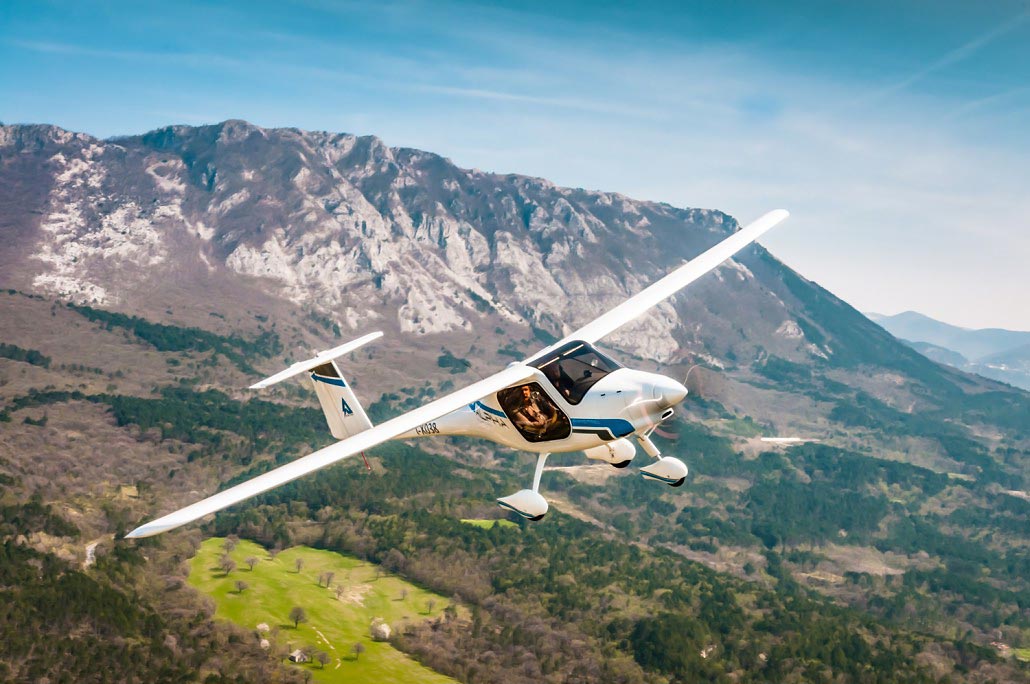




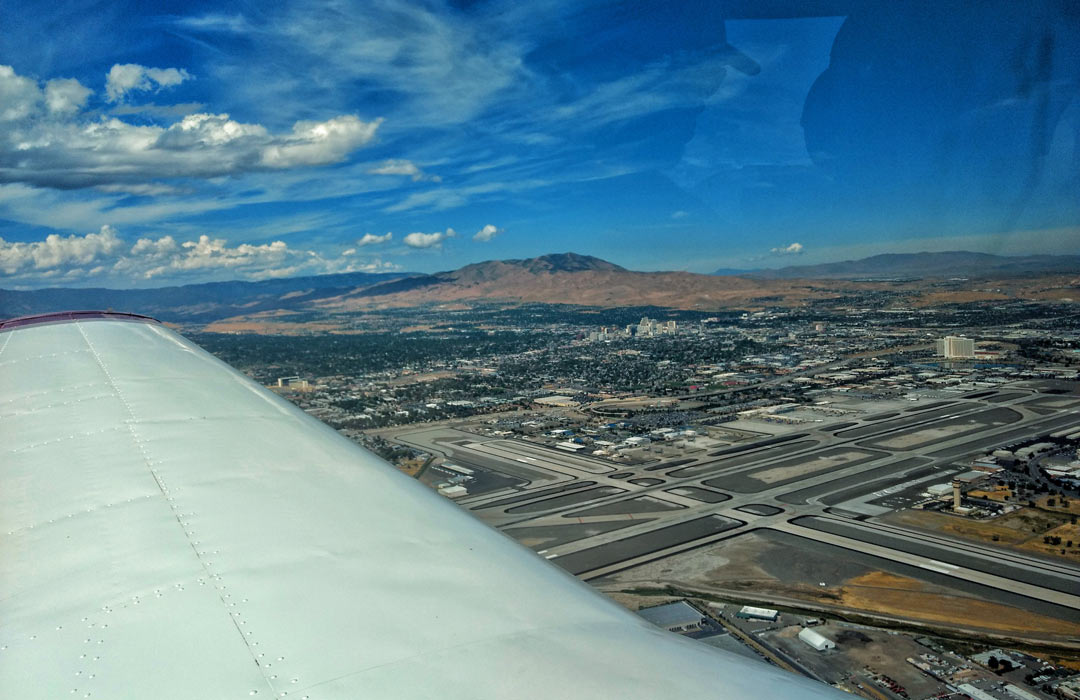

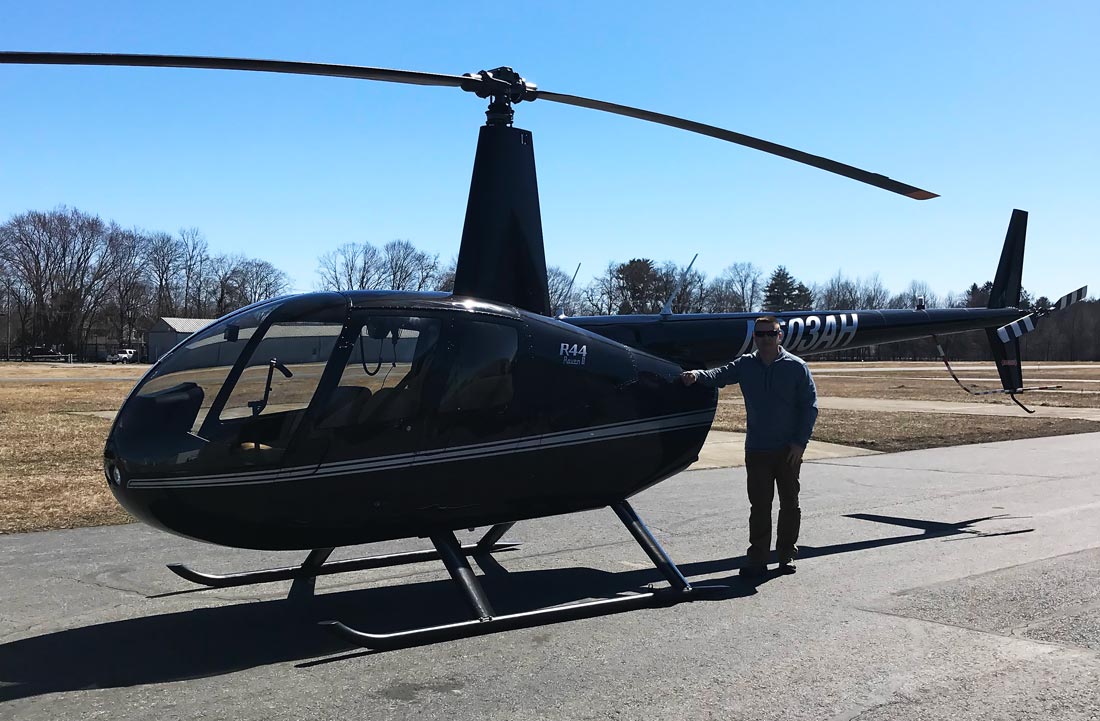

Leave a Reply